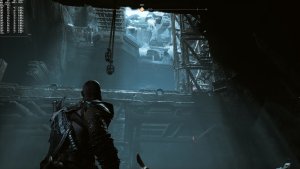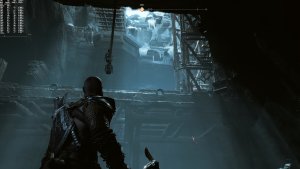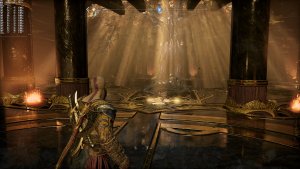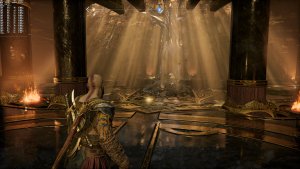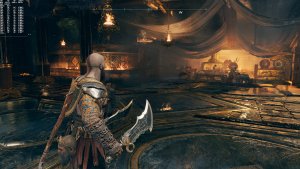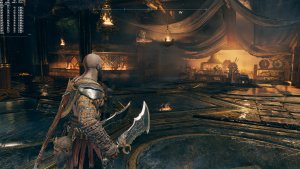As we’ve already reported, Santa Monica Studio and Jetpack Interactive released a new patch for God of War that added support for AMD FSR 2.0. As such, we’ve decided to test it and compare it with DLSS 2.0.
For these comparisons, we used an Intel i9 9900K with 16GB of DDR4 at 3800Mhz and NVIDIA’s RTX 3080. We also used Windows 10 64-bit, and the GeForce 512.95 driver.
Like DLSS 2.0, AMD FSR 2.0 uses temporal upscaling techniques. Therefore, FSR 2.0 should look much better than FSR 1.0, and similar to DLSS 2.0. And it appears we’re right. Below you can find some comparison screenshots between DLSS 2.0 (left) and AMD FSR 2.0 (right). As you can clearly see, these upscaling techniques look the same.
God of War offers sharpening sliders for both DLSS 2.0 and FSR 2.0. For these comparisons, we set the Sharpening slider to 10% on both DLSS 2.0 and FSR 2.0. By setting the same Sharpening setting, we can get a better comparison between these two upscaling techniques.
Now the good news for RTX owners is that DLSS 2.0 runs faster than AMD FSR 2.0 on an RTX GPU. DLSS 2.0 was constantly running better by 5-8fps in 4K on our NVIDIA GeForce RTX3080. For comparison purposes, AMD FSR 1.0 Ultra Quality was also faster than FSR 2.0 Quality.
On the other hand, AMD FSR 2.0 appears to have less shimmering than DLSS 2.0 in the scene we used for our initial DLSS benchmarks. Apart from that specific area, though, both of them look the same.
All in all, we were really impressed by AMD FSR 2.0 as it offers an image quality that is as good as DLSS 2.0. For RTX owners, there is no question here; you can use DLSS Quality and enjoy a higher performance (unless the shimmering we showcased annoys you). For everyone else, AMD FSR 2.0 is the way to go.

John is the founder and Editor in Chief at DSOGaming. He is a PC gaming fan and highly supports the modding and indie communities. Before creating DSOGaming, John worked on numerous gaming websites. While he is a die-hard PC gamer, his gaming roots can be found on consoles. John loved – and still does – the 16-bit consoles, and considers SNES to be one of the best consoles. Still, the PC platform won him over consoles. That was mainly due to 3DFX and its iconic dedicated 3D accelerator graphics card, Voodoo 2. John has also written a higher degree thesis on the “The Evolution of PC graphics cards.”
Contact: Email






